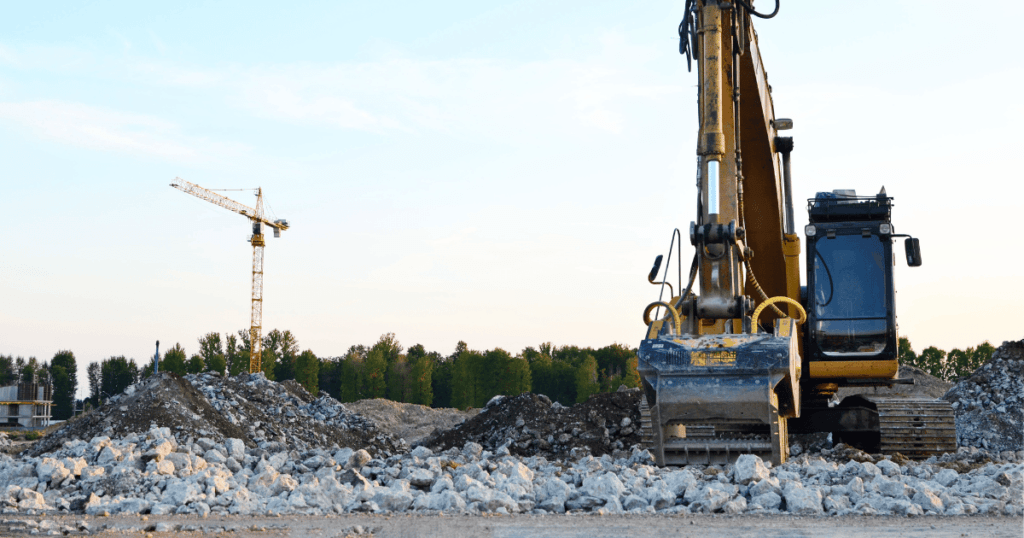Welcome to our exploration of concrete construction, a fundamental pillar of modern engineering and architecture. In this blog, we delve into the essence of concrete, its historical significance, and its pivotal role in shaping the built environment.
From the basic components of concrete to its economic and environmental implications, join us as we unravel the mysteries and marvels of this ubiquitous building material.
Whether you’re a seasoned construction professional or an aspiring enthusiast, prepare to gain insights into the world of concrete like never before. Let’s embark on a journey to discover What Is Concrete Construction.
Understanding Concrete in Construction: The Basics

Concrete is the backbone of modern construction, providing strength, durability, and versatility to structures worldwide. Understanding its fundamentals is crucial for any construction project, whether it’s a small-scale residential build or a large-scale infrastructure development. Let’s delve into the essence of concrete and its significance in the building industry.
Definition of Concrete and its Significance in the Building Industry
Concrete is a composite material comprised of three main components: water, aggregate (such as sand or gravel), and cement. When mixed together, these ingredients form a paste that hardens over time, creating a solid mass capable of withstanding immense pressure and weight.
Its significance in the building industry cannot be overstated, as concrete serves as the foundation for countless structures, from bridges and dams to skyscrapers and highways.
Historical Context of Concrete Usage in Construction
The history of concrete dates back thousands of years, with ancient civilizations like the Egyptians and Romans utilizing rudimentary forms of the material in their architectural marvels.
The Romans, in particular, mastered the art of concrete construction, developing techniques that allowed them to erect colossal structures such as the Pantheon and the Colosseum. Over the centuries, advancements in technology and engineering have transformed concrete from a simple mixture of mud and straw to a sophisticated building material integral to modern construction practices.
Components of Concrete: Water, Aggregate, and Cement
At its core, concrete is a blend of water, aggregate, and cement. Water acts as the catalyst for the chemical reaction that causes the cement to bind with the aggregate, forming a solid matrix. The aggregate provides bulk and stability to the mixture, while the cement acts as the binding agent, holding everything together.
Achieving the perfect balance of these components is essential for producing concrete with the desired strength, durability, and workability.
- Water: Initiates the chemical reaction with cement
- Aggregate: Provides bulk and stability
- Cement: Acts as the binding agent
View Concrete Mix Ratios Here <<<
Advantages and Limitations of Concrete Construction

Concrete construction offers numerous benefits, but it also comes with its share of challenges. Understanding both the advantages and limitations of concrete is crucial for informed decision-making in construction projects.
Durability and Longevity of Concrete Structures
One of the most significant advantages of concrete construction is its exceptional durability and longevity. Concrete structures have a proven track record of withstanding the test of time, resisting corrosion, weathering, and other environmental factors. Properly designed and maintained concrete structures can last for decades, if not centuries, making them a wise investment for any construction project.
Concrete’s Fire Resistance and Thermal Mass Advantages
Concrete’s inherent fire resistance and thermal mass properties make it an ideal choice for building structures that require enhanced safety and energy efficiency. Unlike combustible materials such as wood, concrete does not burn or emit toxic gases when exposed to fire, helping to contain and suppress flames. Additionally, concrete’s high thermal mass allows it to absorb and store heat, regulating indoor temperatures and reducing the need for additional heating and cooling systems.
- Fire Resistance: Does not burn or emit toxic gases
- Thermal Mass: Absorbs and stores heat, regulating indoor temperatures
Challenges with Concrete: Weight Considerations and Environmental Impact

While concrete offers many benefits, it also poses certain challenges that must be addressed in construction projects. Two primary concerns are the weight of concrete structures and their environmental impact.
Weight Considerations
Concrete is a dense material, which means that structures built with concrete can be significantly heavier than those constructed with alternative materials. This added weight can pose challenges during the design, construction, and maintenance phases of a project, requiring careful planning and engineering to ensure structural integrity and stability.
Environmental Impact
The production of concrete is a resource-intensive process that can have a significant environmental impact. The extraction of raw materials, such as limestone for cement and sand and gravel for aggregate, can lead to habitat destruction, soil erosion, and water pollution. Additionally, the manufacturing process itself generates carbon dioxide emissions, contributing to climate change and global warming.
Economic Benefits of Using Concrete in Large-Scale Projects

Despite its challenges, concrete remains a popular choice for large-scale construction projects due to its economic benefits and versatility. Let’s explore some of the key advantages of using concrete in the built environment.
- Cost-Effectiveness: Concrete is often more affordable than alternative building materials, especially for large-scale projects where economies of scale can be realized.
- Versatility: Concrete can be molded into virtually any shape or size, making it suitable for a wide range of architectural styles and design requirements.
- Low Maintenance: Concrete structures require minimal maintenance over their lifespan, reducing long-term operating costs and maximizing return on investment.
In conclusion, concrete construction is a cornerstone of modern engineering and architecture, providing strength, durability, and versatility to structures worldwide.
By understanding the basics of concrete, its advantages and limitations, and best practices for construction management, we can harness the full potential of this remarkable building material while mitigating its environmental impact.
Whether it’s a towering skyscraper or a humble sidewalk, concrete continues to shape the world we live in, one pour at a time.





